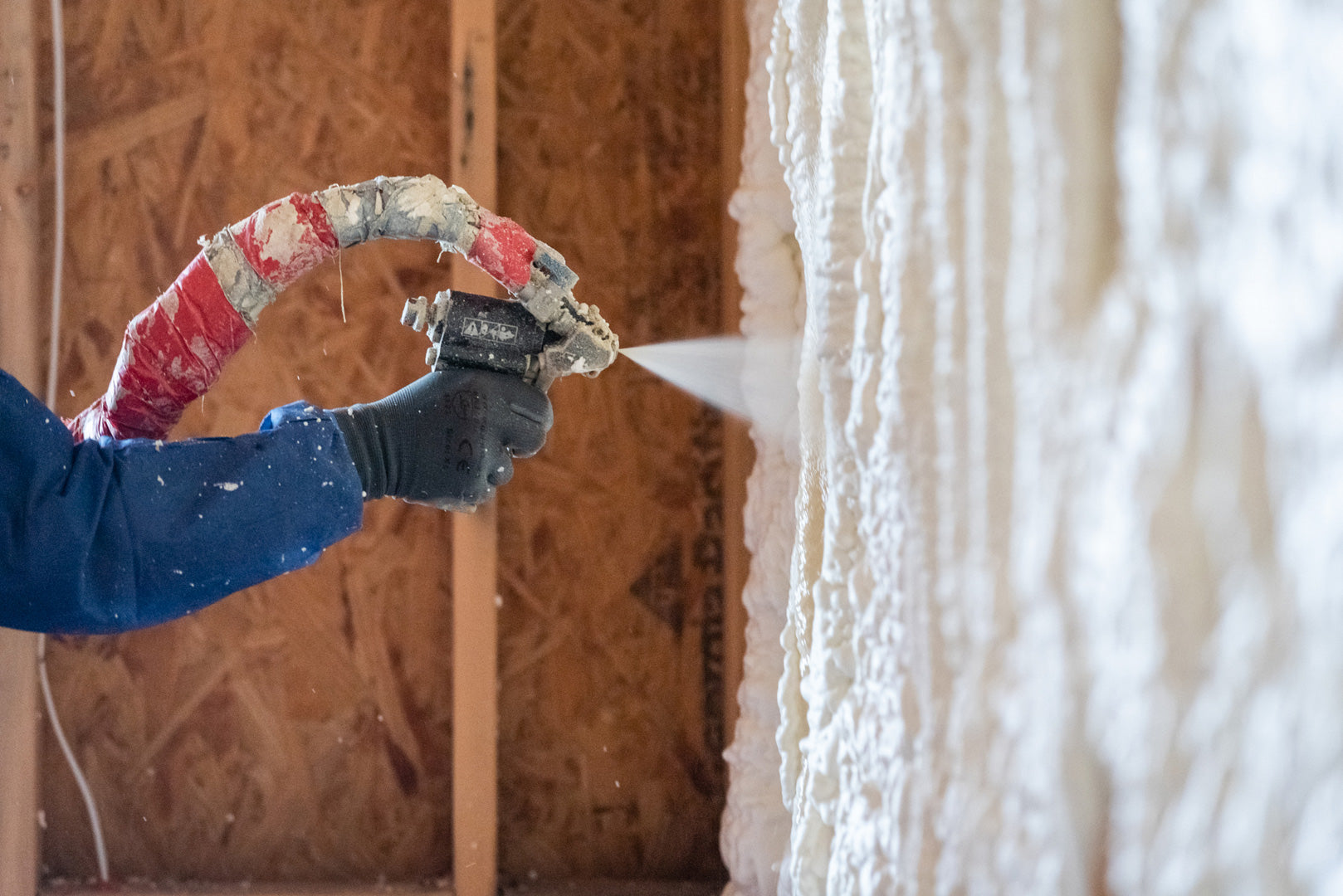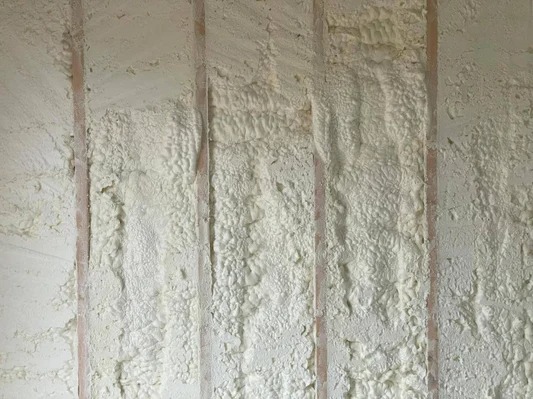Open-cell spray foam is ideal for interior walls because it provides outstanding sound dampening, excellent air sealing, and structural flexibility without adding unnecessary rigidity to wall framing. Its unique composition allows it to expand dramatically and conform to even the smallest crevices, creating a consistent insulation layer. Unlike some denser insulation materials, its breathable nature allows moisture vapor to escape, which helps maintain a balanced indoor environment and minimizes moisture-related issues like mold or rot.
This article explains why open-cell spray foam is a smart choice for insulating interior walls. It presents detailed technical comparisons, performance insights, decision-making criteria, and answers to common questions—all backed by up-to-date industry data. Whether you're planning a new build or evaluating upgrades to your current home, understanding these core principles will guide you toward a better insulation decision.
Why Open-Cell Spray Foam Excels in Interior Applications
Open-cell spray foam insulation is particularly well-suited for interior use due to its spongy texture, lower density, and strong acoustic performance. It provides thermal comfort, airtightness, and noise control, which are crucial in interior spaces where sound privacy and energy efficiency are priorities.
Unlike closed-cell foam, which is dense and rigid, open-cell foam remains pliable. This makes it better at absorbing sound and reducing sound transmission through interior walls. It also enables higher expansion rates, which simplifies the insulation process in irregular framing or areas with wiring and plumbing.
Key Benefits:
- Sound Absorption: Traps sound waves, significantly reducing transmission between rooms.
- Air Sealing: Prevents air leaks, maintaining indoor temperature stability and reducing HVAC strain.
- Expansion Ratio: Can expand up to 100 times its original liquid volume, ensuring thorough coverage.
- Lightweight: Adds minimal weight to framing, ideal for retrofit applications.
- Affordable Performance: Provides strong insulation properties at a lower cost than closed-cell foam.
- Breathability: Allows controlled vapor diffusion, helping manage interior humidity levels.

Comparison with Other Insulation Types
Feature
Open-Cell Spray Foam
Closed-Cell Spray Foam
Fiberglass Batt
Blown-In Cellulose
Sound Dampening
High
Moderate
Low
Moderate
Moisture Permeability
Yes
No
Yes
Yes
Expansion Capabilities
High
Moderate
None
Low
Structural Support
Low
High
None
Low
R-Value per Inch
~3.5
~6.5
~3.2
~3.7
Ideal Use
Interior walls
Roofs, exteriors
Attics, walls
Wall cavities
Acoustic Insulation
Excellent
Good
Poor
Moderate
Cost per Sq Ft Installed
Medium
High
Low
Medium
Longevity
25+ years
30+ years
15–20 years
20–30 years

Technical Specifications
Specification
Open-Cell Spray Foam
R-Value per Inch
3.5
Vapor Permeability
~10 perms
Density
0.5 lbs/ft³
Sound Transmission Class (STC)
~37
Expansion Rate
Up to 100x
Air Infiltration
Very low
Curing Time
~24 hours
Flammability Rating (ASTM E84)
Class 1
Application Temperature Range
40–120°F
Typical Installation Thickness
3–3.5 inches (2x4)
Things to Consider Before Making a Decision
When evaluating insulation options for your interior walls, several factors should be considered before moving forward with open-cell spray foam:
- Moisture Management: Since open-cell foam is vapor-permeable, it works best in environments with well-controlled humidity. Avoid using it in wall assemblies prone to exterior moisture exposure.
- Access for Installation: New construction projects offer better access for spraying foam evenly. In retrofit applications, existing drywall must often be removed for full coverage.
- Building Code Compliance: Local regulations may require thermal barriers (e.g., drywall or ignition barriers) to cover spray foam for fire safety.
- Cost Consideration: While more affordable than closed-cell, open-cell spray foam still costs more than fiberglass. Evaluate performance gains against budget.
- Thermal Targets: Check local climate zone requirements to determine if open-cell’s R-value per inch meets code or if thicker application is necessary.
Bonus Tip:
In mixed-humidity zones, pairing open-cell foam with a smart vapor retarder (like a variable-perm membrane) enhances performance and building durability.
Bonus Tip:
Before scheduling installation, ensure that wiring and plumbing are finalized—retroactive changes can be difficult after foam application.
Common Questions
Does open-cell spray foam support mold growth?
No. While it allows vapor to pass, it doesn’t retain liquid water and doesn’t support mold or microbial growth.
Can I use open-cell foam on exterior walls?
It’s generally discouraged in exterior wall assemblies unless proper vapor controls are in place. Closed-cell foam offers superior moisture resistance for such cases.
Is the R-value sufficient for colder climates?
Open-cell spray foam may require thicker application in colder zones. Combining it with rigid board or other insulations can meet code while maintaining benefits.
How long does open-cell foam last?
It typically lasts the life of the building. Once cured and protected by drywall, it remains stable and effective without maintenance.
Does it reduce energy bills?
Yes. By eliminating air leakage, open-cell foam can help reduce energy use related to heating and cooling.
Bonus Tip:
To maintain indoor air quality, run mechanical ventilation (like an HRV or ERV) alongside airtight insulation for fresh air exchange.
Integrated Market Data
According to the 2023 IBISWorld industry report, open-cell foam accounts for over 42% of all residential spray foam applications, largely due to its performance advantages in partition walls and interior spaces.
In addition, a NAIMA market study highlighted an 18% growth in demand for residential soundproofing materials between 2021 and 2023. The same report notes that homeowners increasingly choose open-cell foam in shared wall construction, such as duplexes and townhomes, to improve acoustic privacy.
Open-Cell Spray Foam FAQ
What’s the main difference between open-cell and closed-cell spray foam?
Open-cell is less dense and allows vapor transmission; closed-cell is dense, waterproof, and stronger structurally.
Is open-cell foam safe for indoor air quality?
Yes. After curing (within 24 hours), open-cell spray foam is inert, non-toxic, and contributes no VOCs to indoor air.
How thick should it be in 2x4 walls?
3 to 3.5 inches is the standard fill depth to match framing cavities, offering adequate insulation in most climates.
Can it be left exposed in unfinished spaces?
No. It should be covered with a fire-rated barrier like drywall or an intumescent coating, depending on local code.
Does it need a vapor barrier?
Usually not in mild climates, but cold or mixed-humidity regions may require a smart vapor retarder or interior membrane.
Make the Right Decision
Open-cell spray foam insulation delivers long-term value for interior wall applications where acoustic separation, airtight sealing, and flexible installation are top priorities. Its high expansion rate ensures full cavity coverage, and its cost-to-performance ratio makes it a practical choice for most residential and light commercial builds.
Before deciding, consider your region’s climate, local code requirements, wall assembly conditions, and long-term energy goals. Consult with a qualified insulation professional to ensure that your system aligns with your specific needs.
Reviewer:
Lily Johnson offered her feedback after reviewing this post. With 8 years in the spray foam insulation field, her suggestions centered around improving outreach to homeowners looking for quality insulation solutions.






Comments